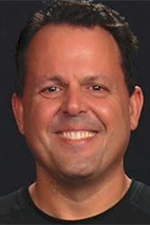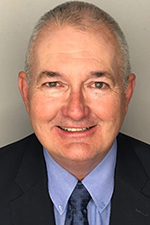

The art and science of beverage technology
BevTech® Proceedings are a benefit of membership for current ISBT members only and are subject to the BevTech Copyright (located at the bottom of the page).

Natural Color Regulation Update
Glen Dreher
D.D. Williamson
Product Development Scientist

Sodium Gluconate - A Tool for Clean Label Taste Masking
Danielle Wedral Licata
Jungbunzlauer
Market Development Manager
Big consumer trends like sugar reduction, plant based products and nutritional products are often associated with the inclusion of ingredients with off-tastes. Reducing bitterness, astringency and off-notes while maintaining a good taste and affordability are hurdles for product developers. Sodium gluconate, a salt of gluconic acid, can help overcome these hurdles. Sodium Gluconate is produced by fermentation and can naturally be found in Kombucha and honey. As a flavor ingredient with modifying properties, Sodium Gluconate can help to modify a variety of off-notes in a tasty way while being cost efficient. Find out more about taste improvement for clean label, nutritional, and reduced sugar beverages with Sodium Gluconate in the presentation.

Introduction of the Craft Beverages Subcommittee
Martin Senz
VLB Berlin
Head of Research Institute for Biotechnology and Water

The Need for Establishing Standards for Color Additives from Natural Sources
John Clos
The Coca-Cola Company
Principal Scientist


Rediscovering Mint Through Extracts in Beverages
Tim Nemeth
ADM
Shanyn Seiler
ADM
Product Marketing Manager
Touted for its refreshingly, cooling qualities and its functional properties, mint has had a long history of being used as a flavoring aid in many different applications — from breath mints to toothpaste. However, its application in the beverage industry has been limited to only a handful of products. Join us on our journey as we rethink mint from a different perspective by reinventing mint into extracts that can inspire new trends and rediscover new applications for an overlooked friend of the flavor world. Do you have the courage to try mint in a beverage?

CGA Activity Update 2020, 2021, and Beyond
John Willenbrock
Compressed Gas Association (CGA)
Technical Manager
This presentation provides ISBT Beverage Gases Committee members with an overview and update of recent and future Compressed Gas Association (CGA) activities, specifically with CGA's Carbon Dioxide and Food Gases committees. It also provides an overview of the general contents of several Carbon Dioxide and Food Gas publications that may be of interest to ISBT Beverage Gases Committee members. For those unfamiliar with CGA, the presentation begins with discussion of what CGA is and does, followed by a brief description of CGA's interactions with other organizations, including ISBT. The presentation then provides an overview of how CGA standards and publications are initiated, developed, and revised. An overview of specific Carbon Dioxide and Food Gas publications impacting beverage manufacturing, distribution, and use, is presented with a focus on those that have recently been developed, are in the revision process, or are new and currently in development. The presentation provides an overview of CGA's interaction on the regulatory front with FDA's Center for Food Safety and Applied Nutrition for the interpretation of regulations for food gases; and with the Food Chemicals Codex and gas ingredient monograph development and revision. The presentation then concludes with discussion of the recent and new ISBT Beverage Gas publications that CGA members, who are also ISBT members, have assisted with.

Beverage Gases - Guideline Update
Bob Yeoman
B&R Compliance Associates
President

Filtration Devices — A Discussion of Their Role in Maintaining Gas Purity
Gary Robson
Sure Purity
Managing Director
Although the CO2 quality incident protection filtration equipment currently available provides protection for the user of CO2 against unwanted contamination, there is always room for development. Recent advances in Smart filter technology can provide the user with the ability to monitor the filtration equipment on a continuous basis. This will enable key operational parameters to be available to the user at any time. Having this data will allow operators to accurately calculate the remaining life of the filtration, potentially giving more flexibility than the current fixed term cartridge change outs. This can result in cost savings for the user, as well as reducing or eliminating the risk of contamination breaking through the filter. Smart filters also offer the user additional technical and convenience advantages, which will be explored in the seminar.

Understanding and Implementing the ISO 8573 Standard for Compressed Air
Maria Sandoval
Trace Analytics, LLC
Laboratory Director
Compressed air and gases are common in beverage manufacturing from the initial stages of production through bottling. Given the importance of compressed air and gases to beverage manufacturing, the quality and safety of this utility should be regularly monitored for contaminants. Combined with proper maintenance, adequate piping, and proper dryers and filtration, compressed air testing can help beverage manufacturers ensure the quality of their end-products. Major global and national standards and organizations, including the ISO, the British Compressed Air Society (BCAS), the British Retail Consortium (BRC), the Safe Food Quality Institute (SQF), the Global Food Safety Initiative (GFSI), and the U.S. Food and Drug Administration (FDA), mandate or suggest monitoring of compressed air and gases used in beverage manufacturing. While compressed air and gas testing has become a requirement for these major food safety standards and organizations, specifications for compressed air and gases are few and far between. ISO 8573 has laid the groundwork for developing limits for contaminants in compressed air and gases. This standard considers particles (non-viable and viable), water, and oil as the key contaminants to monitor. The procedures outlined by ISO 8573: 1-9 can be modified to address pure and mixed compressed gases as well as gas distribution systems. This presentation will address the various sections of ISO 8573 and their test methods and reporting strategies.

New CO2 Source Development - Direct Air Capture
Jerome Brenneman
Pentair
Business Development Manager
Overview and discussion of the development of the CO2 liquefaction and purification system from Direct Air Capture process for use in food and beverage applications. Overview of how Pentair developed and applied.

Integration of Techno-Economic and Life Cycle Assessment for Sustainable Beverage Production
Belen Salazar
Handy Seafood Inc.
Food Technologist
Food and beverage production are energy- and water-demanding industries, the associated processing can generate high environmental impacts. New technologies are being developed to reduce the resources required as well as the emissions produced by food and beverage processing. Nonetheless, besides potentially causing additional processing costs, applications of new technologies may result in shifts of environmental burdens from one process to another. Therefore, there is a necessity of tools to evaluate and compare different technologies based on their economic and environmental performance simultaneously. Techno-economic analysis (TEA) is a commonly used tool to determine the feasibility and profitability of a process, which can further provide recommendations for its design and operation. Furthermore, life cycle assessment (LCA) is a systematic method to quantify the environmental impacts of a process through its life cycle, and identify the hotspots. In this presentation, a review of some applications of TEA and LCA studies in the beverage industry will be covered. While these methods can be used to describe a base scenario, it can be a powerful tool for comparing alternative technologies and making informed decisions for investment projects.

End to End Traceability in Beverages
Bill Romano
Antares Vision
Business Development Manager
The big challenge today is to enter a new paradigm where the key word is serialization, which means tracking every product and creating an "identity card" for every single unit. Consumers are demanding more and more product information due to an increased awareness of ingredients and brands. As a result of this, the beverage industry should now not only guarantee product origin but also give details on production in order to become more sustainable and more desirable to the new generation of consumers. This presentation will outline how Track & Trace can mitigate risk by guaranteeing transparency of the supply chain and warranty of raw materials as a complete service, composed of both hardware and software solutions. With a flexible traceability platform designed for beverage products where customer reassurance is paramount. The purpose is to protect and ensure the transparency of the supply and distribution chain by tracking processes and products and improve customer relations with enhanced serialization transparency. Developing industry requirements are demanding more real time product information. By allowing a greater insight into production performances trust is built and loyalty is created.

Tunnel Operations Best Practices: A Case Study with Kroger Beverage
Matthew Cashner
Nalco Water, an Ecolab Company
Industry Technical Consultant
Purpose of the presentation is to explain the challenges, solution and outcome when best practices for tunnel management are applied to a cooling tunnel. The challenges presented here are like those experienced in warming tunnels, cooling tunnels and pasteurizers across the beverage industry. Kroger is among the world's largest food retailers with a strong commitment to supply their customers with quality products at an exceptional value. Kroger's focus on quality also extends through their operations. Immediately after installing the tunnel cooler, a critical production asset, the plant began experiencing excessive microbiological activity which caused a significant increase in maintenance, cost and downtime. Kroger turned to Nalco Water for support after several years of incurring risk, waste and excessive costs. Through the partnership a comprehensive program was developed which included automation, chemistry, services and operational best practices. The program and best practices will be described in the presentation, as well as the supporting data to show the impact of the program and partnership. The results will show how Kroger was able to maintain their strong commitment to quality while saving 1 million gallons of water per year, reducing chemical consumption and eliminating unplanned manual tunnel cleaning.

Aseptic Filling Requirements for Regulatory Compliance
Dharmendra Mishra
Purdue University
Assistant Professor, PhD, Food Science
Aseptic processing and packaging technology play a critical role in shelf-stable food and beverage manufacturing. Maintaining sterility of food products in commercial manufacturing requires monitoring of several critical factors. In this seminar, we will explore the requirements of aseptic filling and regulatory compliance. There are several types of aseptic fillers based on the packaging types and methods of sterilization. We will discuss the importance of packaging material sterilization and filler aseptic zone sterilization.

Subcommittee Update: Torque and Application Angle (APART)
Lothar Brauer
Brauer Consultancy Service
A lot of work and discussion between brand owners, bottlers and packaging component suppliers led to the understanding that removal torque (RT) is not anymore, an adequate measure to assess seal integrity of bottled beverages but a convenience parameter only. This was a kind of culture change forced by the continuous global replacement of 2-piece/ lined caps by 1-piece HDPE caps. The PTC formed the subcommittee "APART" to verify that application angle (APA) is a much more relevant measure. Members of the SC have contributed in the US in cooperation with CETIE in Europe to define not only location and design of index marks on neck finishes and caps but also to evaluated and approve manual measuring methods and gauges. This kind of global cooperation was part of development of the joint CETIE and ISBT "Plastic Bottle Closure Qualification Test Manual" presented in June 2019. After the confidence in measuring the APA manually and the usage of the APA as an important parameter and since RT measuring is still required, the idea came up to combine motorized off-line RT measuring with the APA measuring. For to evaluate the available equipment/ technology test labs have been asked to contribute to a RR-Study. After a short summary of the achievements of the SC the results of the RR study will be presented and conclusions and recommendations will be shared. In a short appendix I'll give an update on the latest status about the EU "Single Use Plastic" regulation in particular regarding Art. 6 dealing with "Tethered Caps". I'll update about work status of the CEN WG 25 on test methods and parameters and will briefly share with audience the latest answers of cap suppliers.

US PET Recycling Markets and Outlook
Darrel Collier
NAPCOR
Executive Director
This presentation will cover the status of US PET recycling examining post-consumer bottle supply, available recycling capacity and utilization for RPET reclaimers and downstream demand outlook for the various RPET applications. It will review the disconnect between RPET supply and minimum content commitments being legislated or initiated by individual brands and cover requirements to bridge this increasing gap.

ISBT 2020 Recycling Guideline for PET Bottles
Michael O'Leary
DAK
Sr. Tech. Marketing Rep
Within ISBT's Packaging Technology's subcommittee Sustainability, the team has been focusing efforts to provide critical guidance to the designers of PET bottle packaging intended to incorporate recycled content and improve the acceptability of the package for current recycling streams.

Conveyor Lubricant Review
Matt Bilski
Ecolab
Lead Chemist
This presentation will be an overview of conveyor lubricants and how they are used in the packaging hall of a beverage production facility. The topics covered will be why conveyor lubrication is used, the differences between wet versus dry lubricants and how coefficient of friction is used and calculated to determine if a lubricant is used effectively. Then it will discuss recommended installation standards to ensure optimal performance of the lubrication system and how lubricants are connected to PET stress-cracking. Finally, it will discuss troubleshooting for conveyor lubricants to help operations run smoothly.

Beverage Industry High Security Holograms
Nira Maya
Nanografix
CEO
The printing of instant, digital, and variable high security holograms for the beverage industry with track and trace applications.

Stretch Wrap Management System "MUST"
Kyle Pischel
Atlantic Packaging
Technical Director
Stretch wrapping was once merely a necessary part of manufacturing - but after years of material reduction, secondary packaging changes, and retail display variances stretch wrap has been left to make up for added instability and safety challenges. Atlantic Packaging has spent 15+ years committed to developing technology and a knowledge base designed to educate customers and improve on stretch wrapping culture. Atlantic's MUST Monitoring Program was developed in the beverage industry during a time when these changes were first emerging. With the addition of a flexible film lab and a cutting-edge Packaging Solution Center, a full suite of technology is available to gather data and provide analytics on load stability. The mission of Atlantic's Stretch Program is to reduce material, increase containment, and ultimately end break, damage, and loss.

Challenges of Soft Drink Production - in a Brewing Environment
Katia Jorge
FlavorActiV Ltd
Americas Director
Breweries around the world are continually looking for innovative products to engage with customers. Among different beer styles, many breweries are now competing in the space of non-beer beverages that includes mead, cider, cold-brew coffee, root beer, radler, shandy, kombucha and many more. Professional brewers have the know-how, and all the technical methodologies that encompass brewing, but may encounter different challenges when producing non-alcoholic beverages. Microbiological contamination, raw material taints, equipment are a couple of threats that may compromise product stability and consistency for non-alcoholic beverages manufactured within a brewery. A great need and often overlooked, is additional sensory training for the non-alcoholic beverages within a brewery. Familiarizing the brewery staff with the full range of sensory attributes is the right approach to minimise the possibility of a non-characteristic product leaving the manufacturing facility. This presentation will review off-notes with brewery operations (production, taints, microbiology) that one must consider when expanding the portfolio to non-alcoholic beverages.

What's the Latest with Ozone Technology for Beverage Applications — What Was Then . . . This Is Now
Don Lanini
Evoqua Water Technologies
Solution Architect


Panel Discussion: Water Quality as an Influencer to the Beverage Production and Consumer Perception
Matthew Cashner
Nalco Water, an Ecolab Company
Industry Technical Consultant
Douglas Glanz
ChemTreat
Laurie Gilmore
The Coca-Cola Company
Water & Wastewater Technology Director
Matt Lecky
Keurig Dr Pepper
Director, Sensory and Consumer Science


Water plays a critical role in beverage quality. Treating the water that enters a production facility varies based on the source water. The different types of treatment systems commonly found in beverage production can impact the finished beverage product quality. It is difficult to measure the effects of varying water quality in high throughput processing so it is important to understand the effects on the beverages. Building a tool kit for water quality parameters and the impact on finished beverage sensory attributes can help determine the mitigation to quality control. This panel will host experts on the treatment systems commonly used in beverage manufacturing. An expert to identify the issues with water quality fluctuation as it relates to getting a consistent product in the package. Finally, a beverage consumer perception expert will discuss the influence to the flavor profile that can create off notes.

The Printing of Instant Digital and Variable High Security Holograms for the Beverage Industry with Track and Trace Applications
Dan Lieberman
Grafix

Refrigerant Regulation Challenges
Steve Versteeg
FBD Partnership, LP
Sr Project Engineer
2021 is a year when regulations further restricting acceptable refrigerant types will become more impactful in the United States. Having a strategy based on your market is a challenge. Understanding the basics of the regulations is a first step.

Multi-Stage CO2 Polishing Filters for Fountain Applications
Gary Robson
Sure Purity
Managing Director
This presentation explores the issues and risks associated with contaminated carbon dioxide, sources of contamination, ingress, lack of traceability, handling, storage, and the effects on beverage safety, sensory and consumer satisfaction.

Retail Fountain Trends and Innovation in a Challenging Time
Candice Thomas
Ecolab
Principal Technical Account Manager
Over the past year the world has been impacted by the COVID-19 pandemic. Recent trends have shown that COVID-19 is leaving a lasting impression on consumers. Consumers are wondering if it's safe to go back. They're hesitant. Their confidence is low and they need assurance that it's safe by knowing what sanitation practices are in place. Having the right products and procedures in place for fountain beverage equipment has never been more important. Whether it is self-serve beverage stations or beverage stations in the kitchen, we've supported our customers throughout this journey — helping them find the right products and programs to prevent the spread of COVID-19, providing our expertise to help create reopening best practices and develop new procedures aligned to CDC guidelines and leveraging our training to ensure employees are using the right products, at the right time, in the right way.

An Introduction to Biofilm and the Center for Biofilm Engineering and Current Research on Biofilms
Diane Walker
Montana State
Research Engineer
After introducing Montana State University's Center for Biofilm Engineering (CBE), an example of work regularly conducted in the CBE's Standardized Biofilm Methods Laboratory (SBML) will be presented. In 2016, the SBML responded to a Request for Proposals from the Brewer's Association to 1) develop a laboratory method for growing representative biofilms in draught beer lines and 2) test a cleaning procedure that could be used by craft brewers to ensure quality beer at the tap. Working with local breweries and distributors and the National Sanitation Foundation, a growth method and associated cleaning protocols were developed. The results of these studies will be described.

Role of Biofilm from Drinking Water Systems on the Spoilage of Thermal-Processed Beverages by Heat-Sensitive Fungi
Dr. Emilia Rico
BCN
CEO
Spoilage of thermally processed beverages by both heat-resistant molds (HRM), heat-sensitive molds (HSM) and yeasts is a widespread problem for the beverage and juice industries. These beverages and juices can be classified as hot-filled and aseptically- or cold-filled. Since they are heat-processed, both groups can be spoiled by heat-resistant microorganisms such as the HRM. Hot-filled as well as cold- or aseptically-filled beverages can also be environmentally contaminated by heat-sensitive microorganisms causing several types of spoilage. Spoilage of these products has been caused by HSM such as Fusarium oxysporum, Exophiala Cladosporium, Aureobasidium pullulans, Cladopialophora, Rhinocladiella, Trichoderma and yeasts, as well as bacteria such as lactic acid bacteria (LAB) and acetic acid bacteria (AAB). The eradication of some of these microorganisms from the equipment presents a challenge since they are involved in biofilm formation which protects them from the effect of sanitizers. Melanized fungi such as Aureobasidium, Exophiala, and Rhinocladiella as well as other HSM such as Fusarium oxysporum and Trichoderma have been reported to be associated with groundwater and groundwater derived tap-water. In spite of well-established water cleaning processes, fungi originating from groundwater or surface water enter water distribution systems and form stable biofilms on different pipe materials. In the presence of biofilm in the drinking water supply system, many of these microorganisms can survive chlorination. Even though many companies use reverse osmosis (R.O.) water in the manufacturing of beverages, equipment and beverage processing areas are cleaned with regular chlorinated city water. Molds present in the biofilm in the lines of the drinking water could not only contaminate these surfaces but also contribute to the formation of biofilm on the beverage processing equipment as well as in the cooling tunnel. This presentation will cover all this information as well as ways to eliminate or reduce this biofilm.

Interaction Between Microbiology and Packaging Machinery — Investigations, Effects, Strategies
Jan Fischer
VLB
Head of Beverage Technology
There is no doubt that viable microbiology at the filling site represents a threat for the product. For this reason many strategies exist that relate to keeping up good filling hygiene. VLB Berlin did research on breeding biofilms under realistic conditions, to find out what grows when at specific filling lines under specific conditions. Moreover, the issue of microbiologically induced corrosion at filling machinery has been investigated.

ISBT COVID-19 Pandemic Best Practices Guidance Document
Andrew Reim
Ecolab
Exec. Area Technical Support Coordinator

Current Issues for Sweetener Labeling
Daniel Berg
Eurofins
Compliance for the 2016 FDA rules on Nutrition Fact Panels is finally here. Added Sugars received much of the attention in the roll out of these new rules, but there are a number of other changes and developing topics in the area of sweetener labeling. This presentation will cover the new rules and address developing topics such as labeling considerations for Allulose and other novel sweeteners, developments in analysis, natural claims on sweetener products, and Bioengineered disclosures of sweeteners. Developments in International labeling standards will also be covered.

Liquid Sugar Refined from Raw Sugar Crystal at Bottling Plants
Chris Bryant
Jord
Bottling plants continually seek ways to reduce supply chain costs of which sugar is a significant contributor. We have developed an innovative process plant that produces liquid sugar directly from raw sugar crystals at bottling plants. This presentation will focus on evaluating the key drivers for the feasibility of direct liquid sugar. Bottling plants should review these drivers for potential cost reduction and increases in sustainability. The liquid sugar plant uses technology proven for more than 50 years in the sugar refining industry. It has been developed with leading industry experts and technology suppliers.

Allulose - Exciting New Tool For Sugar Reduction in Beverages
Rich Stewart
Ingredion
Technical Service
A brief history and background of rare sugars. What rare sugars are currently being used in food and beverage applications. The presentation will look specifically rare sugars in beverage applications.

ISO Shipping Containers
ISO Shipping Containers
Carry Transit LLC
VP of Compliance
Bill will be presenting on alternative shipping containers or ISO containers with the advantages and disadvantages from shipper and customers perspective.

TC Major Initiatives — PFAS — Carbon/Trace Contaminant Subcommittee Project
Ronit Erlitzki
AdEdge Water Technologies
Director of Business Development & Innovation
It is hard to remain indifferent to the new buzz word in the emerging contaminants arena. PFAS. Special project lead by the Subcommittee is aimed at lending some clarity and answer some of the basic questions about PFAS and its potential impact on new regulation, water quality and water treatment.

High Recovery Flow-Reversal RO: Retrofit to the Rescue!
Ronit Erlitzki
AdEdge Water Technologies
Director of Business Development & Innovation
Imagine a situation where the demand requires one to operate the RO above its production capabilities? Or facing challenges on tough raw water quality such as high silica concentrations? And last but not least, trying to achieve an improbable Water Usage Rate? If you answered "yes" to at least one question, you want to attend this session.


Dechlorination / Dechloramination Using Granular Activated Carbon
Kirtipal Barse
Jacobi Carbons Inc.
Senior Applications Engineer
John Sherbondy
Jacobi Carbons, Inc.
Sales Manager
Disinfection of water is vital to kill pathogens and prevent any proliferation of bacteria in treated water. The treated water contains disinfectant residuals to provide protection against waterborne pathogens. Chlorine and Chloramines are commonly utilized disinfectant for municipal applications. However, the disinfectant residuals in the treated water can pose challenges for beverage applications including taste and odor issues, fouling and corrosion of equipment, and formation of disinfection by-products (DBPs) that are known to be carcinogens. With a host of challenges associated with disinfectant residuals, it is common to dechlorinate or dechloraminate the water prior to its end use. Granular Activated Carbon (GAC) presents an effective and mature solution for dechlorination and dechloramination applications for beverage industry. The presentation provides an overview of using GAC for dechlorination and dechloramination of drinking water. Key characteristics of activated carbon and their effect on the dechlorination/dechloramination will be discussed during the presentation.

Wastewater Recovery and Reuse in the Food and Beverage Industry Utilizing Membrane Bioreactors
Anthony Amendola
SUEZ Water Technologies & Solutions
Application Engineering Leader
Water scarcity is becoming a global concern as population grows and urban sprawls expand. High water risk areas are also becoming a serious limiting factor for industrial growth as facilities require water for their production process and utilities, like boilers, cooling towers, etc. A global food manufacturing company that has fifteen food manufacturing facilities in Mexico partnered with SUEZ to implement wastewater recovery and reuse projects in eight of their main plants to achieve a water reuse goal of 50-70%. This paper will present key information related to the MBR system design, start-up and operation, giving special attention to design recommendations to be able to achieve consistent wastewater quality for the purpose of reuse. The procedures to achieve a successful start-up will be discussed and the performance data (biological and membrane performance) for the first 7 years of operation. The reuse of water (up to 77%) has helped these three facilities achieve and surpass their targets, decrease demand of city water, and reduce sewer surcharges.


Carbon Filtration Sanitation Considerations
Roy Clackum
Cabot Corporation
Sr. Applications Specialist
Andrew Reim
Ecolab
Exec. Area Technical Support Coordinator
Achieving and maintaining sanitary conditions in carbon filtration operations is a continual challenge for many beverage operations. Micro organisms tend to flourish when the get into the carbon system and are difficult to eradicate. This presentation will examine some of the underlying causes, explore best practices to mitigate the problem, and recommend future design considerations to make this challenge more manageable.